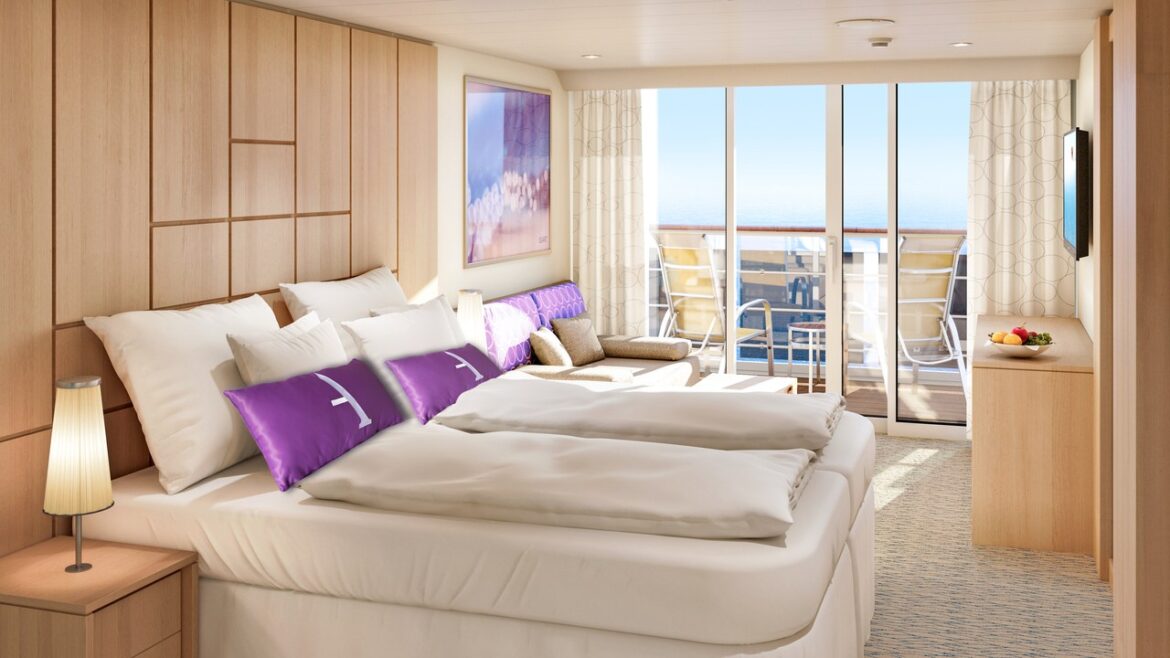Why you should sail to Iceland aboard Ambassador Ambition

When it comes to fjords, people often think of Norway. But Iceland has plenty too. They’re dramatic but in a very different way. Here they’re initially unassuming, flat-top mega hills with vegetation lower down, grey scree above, then you realise how tall they are, how steep they are – and how inaccessible. Roads snake along the water’s edge but there are few passes, tunnels or mountain paths.
The countryside is often a moonscape of grey, slatey hills interspersed with volcanic rubble, waterfalls and bubbling geothermal springs. There are volcanoes aplenty – just before we arrived Mount Fagradalsfjall, a half-hour southwest of the capital, Reykjavik, erupted.
And then there’s the wildlife. Ambassador Cruise Line voyages feature experts from UK whale conservation charity Orca who host deck watch groups and advise on the best places to look out for them.
The ship
Ambition is the second ship from UK Ambassador Cruise Line, sailing from ports including Liverpool, Newcastle and Belfast, especially for cruises such as this Iceland’s Land of Ice & Fire adventure.
A classic ship given a major makeover in rich colours, there are two main restaurants, plus the Borough Market buffet, everything from roast turkey to fresh prawns to curries.
The Palladium theatre has nightly entertainment including farce, musicals (a trimmed down version of My Fair Lady), rock singing and dancing and comedy (Liverpool veteran Pauline Daniels). There were daytime showbiz talks by opera director Jamie Hayes including the Beatles and the history of musicals.
The whales
Ambassador’s partnership with Orca sees Abbi and Becci, both expert and amusing, stand daily deck watch, binoculars poised, with an ever-changing accompaniment of guests – over 11 days they clock more than 50 hours in all weather.
Whale spotting takes patience but their log records 171 sea creatures of 10 species: six types of whale (pilot, sperm, fin, humpback, minke and northern bottlenose), three types of dolphin and some porpoises.
Seydisfjordur
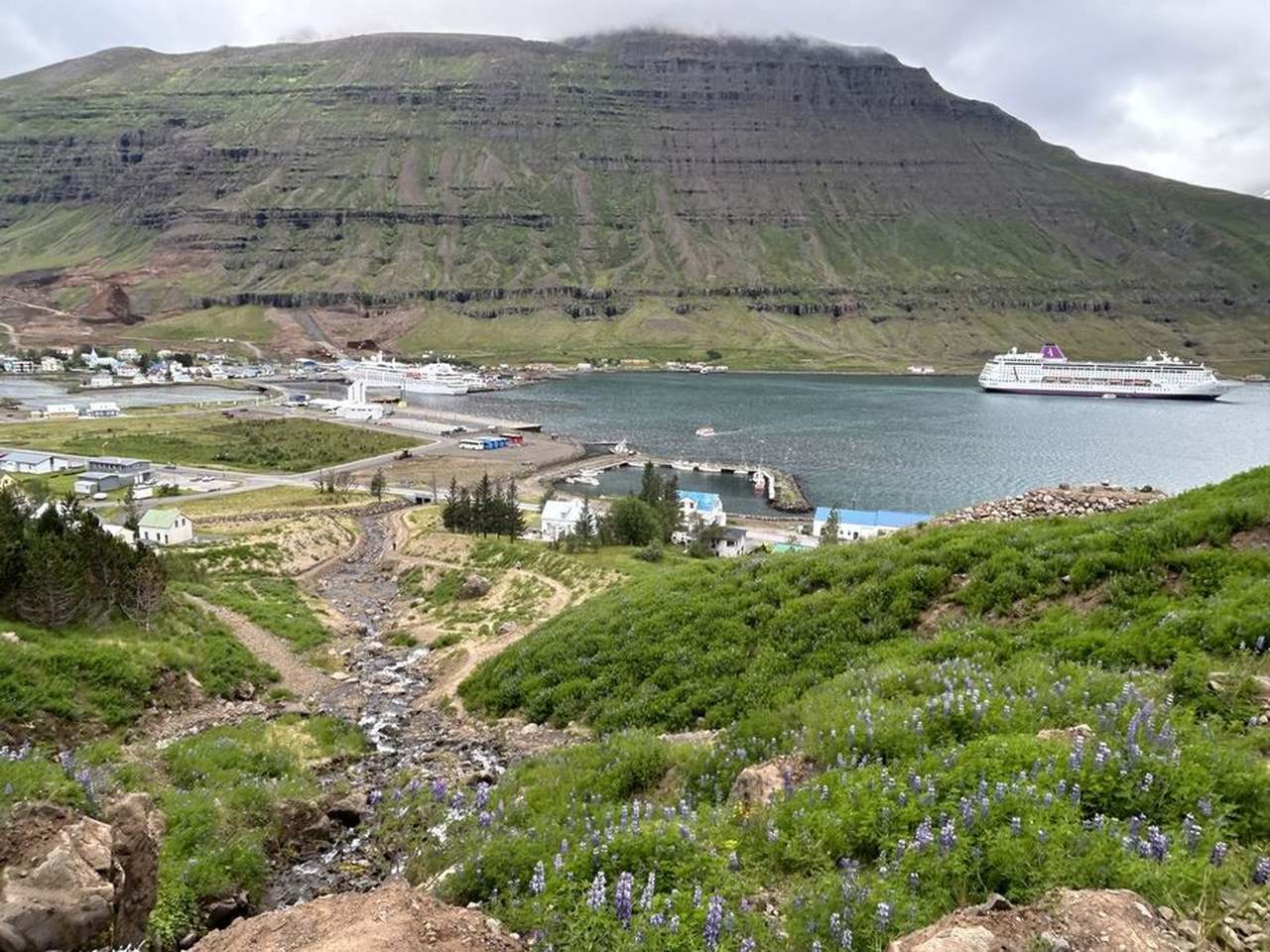
Seydisfjordur
In the north-east corner, a rare non-geothermal spot. The town of 700 sits at the end of a long fjord of the same name. The mountains on either side are awash with white, bobbly cottongrass and fields of blue-white lupins, a plant that thrives in poor conditions and was introduced to stabilise thin top soil – and now is colonising the country.
The town, gaily-painted timber buildings, mostly coffee shops and stores selling chunky, scarily-priced jumpers, is centred on lake-like fjord head, Lonio. Búdareyrarfoss waterfall plummets down a cliff in stages and a trail, a bit of a clamber, gets people to the main fall.
I take a sunny tour to Skalanes nature reserve. A bus with giant wheels makes a twisting 45-minute fjord-edge journey – one sees the need for the wheels as the road swiftly turns to dirt with three boulder-strewn streams to fjord.
From the little, red visitor centre it’s a mile-long walk through lupins, dive-bombed by Arctic terns, beautiful with black heads and swallow tails but fiercely protective of their territory. Rounding a corner we face a mighty sea cliff. It’s home to hundreds of kittiwakes and gull-like fulmars but nearby is a colony of puffins. Beautiful with big orange bills they take off and, with their rotund bodies, seem to plummet before their strangely small wings take over.
Akureyri
The small town on 40-mile Eyjafjördur has several narrow streets of shops. I walk up the hill to the 1940s modernist church, itself at the top of 100 grandiose steps, then go farther, to the Botanical Garden, a free haven of trees, lawns and – I timed it right – a beautiful collection of the hard-to-grow-at-home giant, blue Himalayan poppies.
If you’re in Iceland you can’t not try one of the geothermal pools and my excursion takes me past fields of bobbly lava rock, created by heat and water pushing up through small fissures. At the fishing town of Húsavík is GeoSea, waterfront open-air baths that veer from pleasantly warm to something you could almost boil and egg in. It’s relaxing to wallow and gaze out to sea, even if I don’t see whales.
We also stop at one of Iceland’s most beautiful waterfall Godafoss, a wide, frenetic waterfall on the rushing Skjálfandafljót river.
Isafjordur
Hidden in the Westfjords, this is the 3,000-person capital of Iceland’s remotest region. Sitting on a curved promontory with sea in almost every direction it’s in a small fjord, Skutulsfjördur, off much bigger Isafjördur, sea-like with an imposing, snow-capped ridge of mountains.
There are bars, coffee bars, a handful of shops, even a supermarket and marked walks around the streets and up on to the low slopes of the roller-coaster-like curve of the mountain. I take a boat ride to Vigur Island, deeper into the main bay. Here, a one-family farm (with café and gift shop) I see Iceland’s oldest windmill, like a garden shed with sails, and Iceland’s oldest seaworthy boat, one that was documented as old 200 years ago.
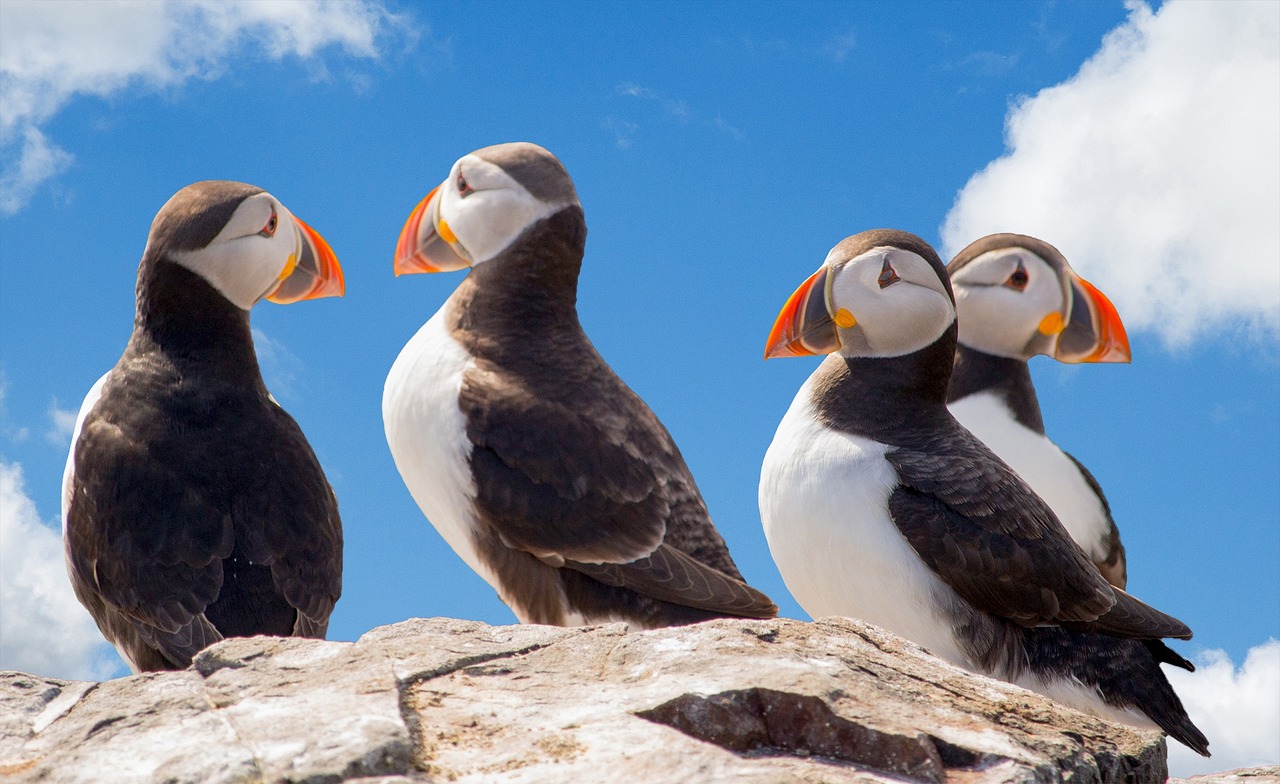
Puffins on the rocks
But this a place for birds. First we see eider ducks; the farm is a major producer of eiderdown. Then puffins, on rocks and bobbing in the ocean – some 100,000, the country’s biggest colony. Then rare black guillemots, beautifully shiny with white wing markings and red feet. Then Arctic terns, hundreds filling the air; we’re given flag sticks and advised to hold them high near to keep them away. Before heading off there’s coffee and rhubarb tart – rhubarb grows well here, particularly here thanks to guillemots nesting (and fertilizing) under the leafy canopy. Then we glimpse a humpback from the boat back.
Reykjavik
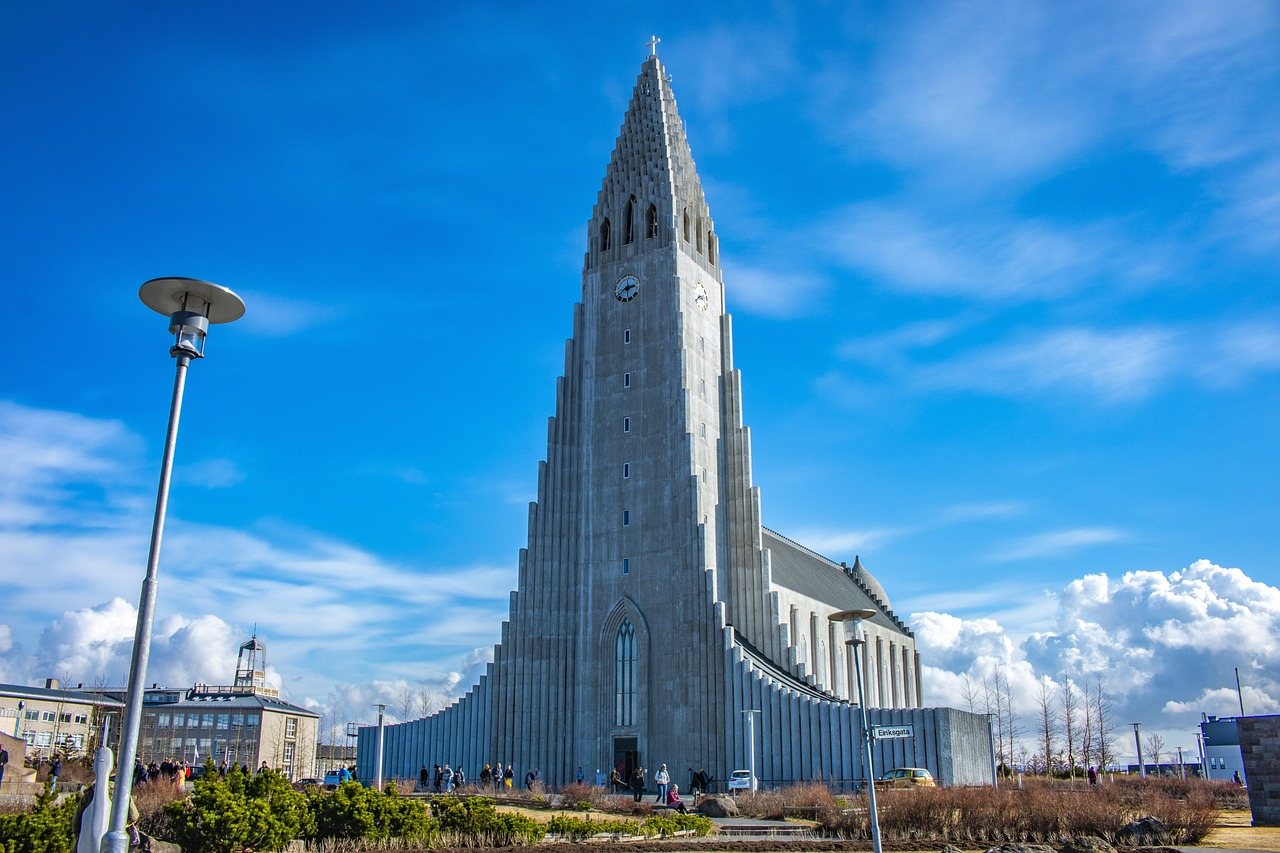
Hallgrimskirkja, Image by Marcel Dominic from Pixabay
Iceland’s capital and a place that puts on the style alongside the old, wooden buildings. Harpa, an angular glass concert hall, is the seafront focal point.
It’s very walkable and I head up the hill through the narrow shopping streets, all jumpers and cuddly puffins, to monumental, concrete Hallgrimskirkja, Iceland’s biggest church, only dating from 1986, undecorated inside although the giant organ is a work of art. It’s definitely not the cathedral, which is tiny; I find it tucked away by the old parliament building back near Harpa. I carry on and find the old harbour where warehouses are increasingly shops and restaurants. The Maritime Museum has a couple of historic ships docked outside.
A tour makes visible the plumes from the volcano, Mount Fagradalsfjall, a major attraction after three eruptions in two years. We head through a sci-fi landscape, past lava fields, black sand beaches, unnatural hills and even the police presence and now-closed car park for volcano visitors, a three-mile walk from the action.
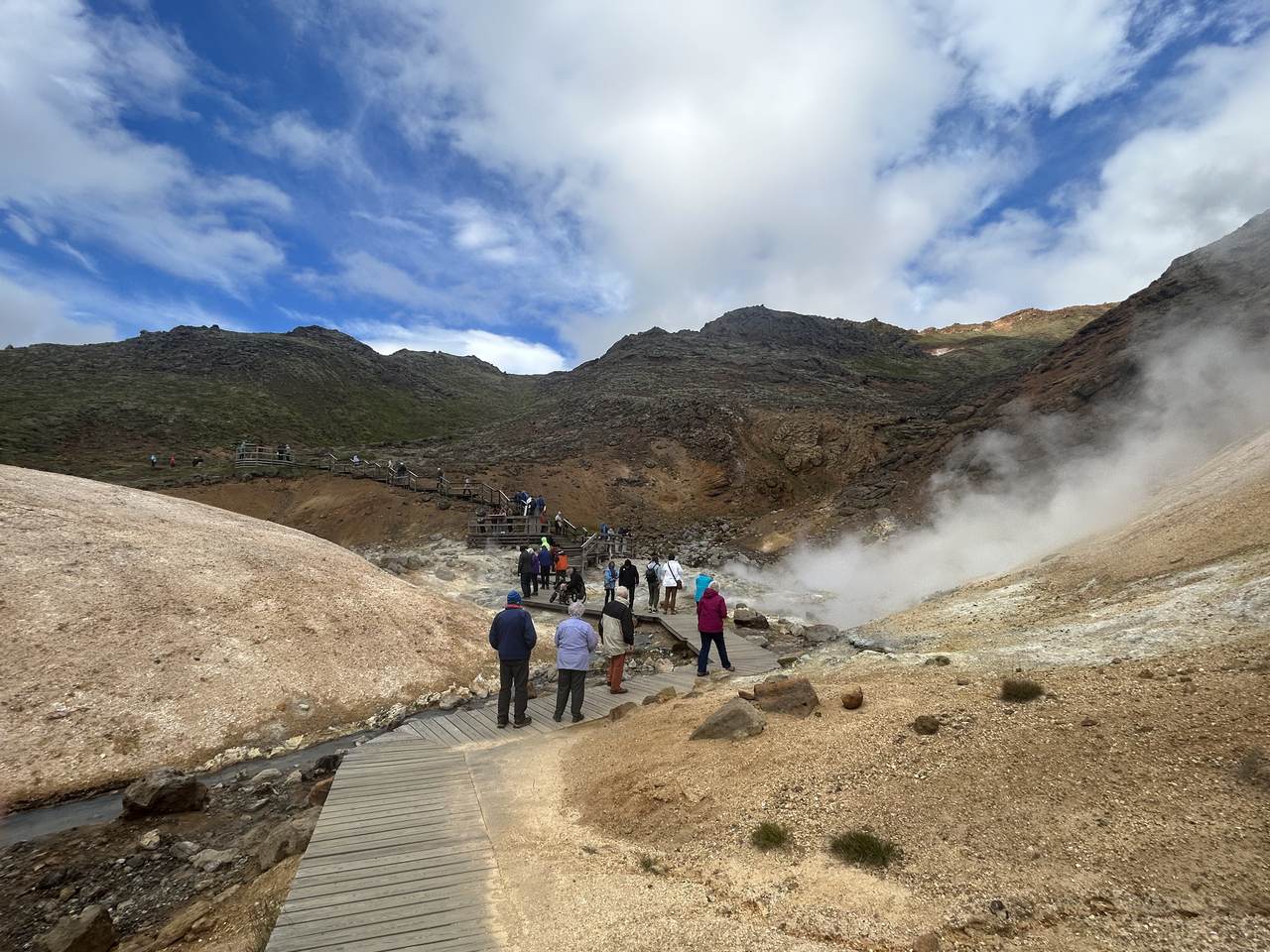
Krýsuvík
Our destination, Krýsuvík, walkways through steaming volcanic vents and boiling springs surrounded by multi-coloured hills, is fascinating but somehow seemed a letdown.
The beginning and the end
We left from Liverpool, a sunny evening down the Mersey past historic docks and Everton FC’s rising new stadium, Liverpool FC’s Anfield visible in the distance.
The Faroe Islands was first stop, between Scotland and Iceland with scenery leaning towards the latter. Torshavn, the capital, is a quiet town, its parliament in a cluster of red-painted cottages overlooking the harbour. My scenic tour takes me over eerily-treeless hills laced with tiny waterfalls.
Belfast was our final call – a trip to the Giant’s Causeway, as dramatic as anything in Iceland, and a fitting end to a very different cruise.
Verdict
An exploration of an off-the-beaten-track destination with extraordinary scenery and plenty of wildlife. Orca’s contribution is huge while Ambition is a friendly ship with excellent food and entertainment.
NEXT SAILING: The 11-night Iceland’s Land of Ice & Fire cruise on Ambition departs July 4, 2024, from Liverpool, July 5 from Belfast, from £799.
